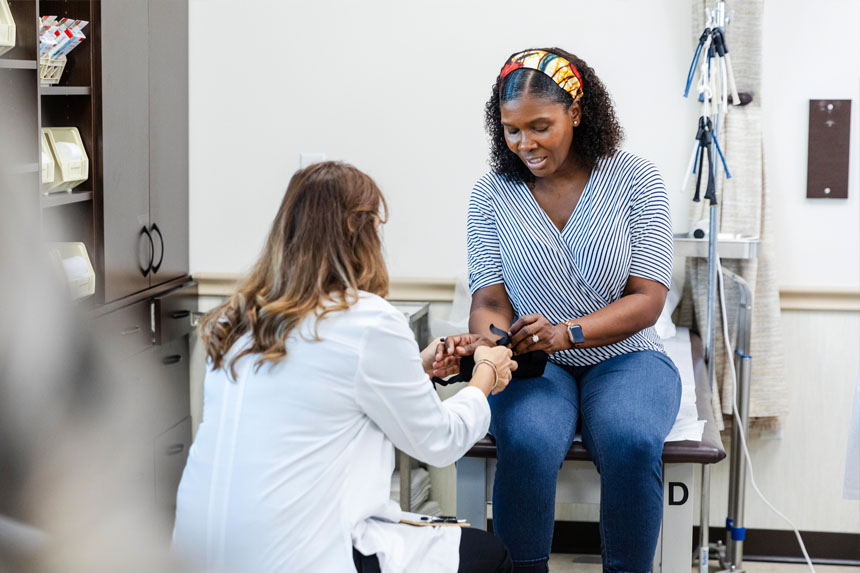The orthopedic field is experiencing significant transformation, driven by advancements in technology, evolving patient care models, and pharmaceutical innovation.
These changes are reshaping how procedures are performed and where they take place, with profound implications for the medtech industry. To stay ahead in a competitive landscape, medtech companies must understand these trends and position themselves to respond effectively.
This blog explores three critical trends in orthopedics that are poised to impact the medtech industry: The influence of GLP-1 drugs on procedure volumes, the growing adoption of surgical robots, and the shift of care to ambulatory surgery centers (ASCs).
Trend #1: GLP-1 drugs impacting the volume of orthopedic procedures
Since the beginning of 2024, it seems like every healthcare professional is talking about the explosive popularity of GLP-1 drugs, particularly how these medications have garnered significant attention for their ability to promote weight loss and manage Type 2 diabetes.
However, many healthcare experts and investors are having mixed feelings about the rise of GLP-1 drugs.
For some medical device leaders, there’s reasonable concern that GLP-1 drugs could cut into the market and negatively impact the volume of orthopedic surgical procedures. With obesity being a major risk factor for joint deterioration and conditions like osteoarthritis, experts are concerned that these drugs could lead to a decline in the need for some of the most common orthopedic procedures, including hip and knee replacements. A decline in orthopedic and bariatric procedures could translate to lower demand for pacemakers, CPAP machines, gastric bands, and glucose monitors, which are all common medical devices that help patients manage and treat their obesity.
On the flip side, there some orthopedic leaders that feel GLP-1 drugs won’t have a negative impact on orthopedic procedures at all. In fact, they may even offer a modest increase, just not initially. This is because obesity is often an obstacle to joint surgery eligibility—if someone’s BMI can be lowered, whether through GLP-1 drugs or other means, to a certain threshold, they may then be eligible for surgery. Additionally, reducing weight to a healthy level can increase patient lifespan, which can extend the runway for orthopedic procedures.
Trend #2: Expanding uses for surgical robots
Surgical robotics has revolutionized the field of orthopedics, enabling surgeons to perform complex procedures with unparalleled precision. Initially adopted for knee and hip replacements, the use of robotic systems is now expanding into spine surgery, shoulder replacements, and even minimally invasive interventions. This trend is set to transform the medtech industry as healthcare providers seek innovative technologies that improve patient outcomes and operational efficiency.
For medtech companies, this opens doors to develop more sophisticated and specialized robotic platforms tailored to niche orthopedic procedures. Additionally, integrating advanced technologies such as artificial intelligence (AI) and augmented reality (AR) into robotic systems can further enhance their capabilities, creating a competitive edge.
Moreover, surgical robots are proving to be valuable tools for data collection. By capturing detailed intraoperative data, robotic platforms can generate insights that guide post-operative care and refine surgical techniques. This data-driven approach offers medtech companies opportunities to develop complementary software solutions and analytics platforms, adding value beyond hardware sales.
Trend #3: A continued shift to ASCs
In recent years, there has been a notable shift in orthopedic care away from traditional hospitals and into ASCs.
As you may know, this trend is driven by the growing emphasis on cost-effective, patient-centered care, the lingering effects of COVID-19, and the convenience and accessibility these facilities offer over hospitals. In addition, the CMS included total shoulder replacements in their list of ASC-approved procedures, 2023. And in January 2024, Medicare began covering the procedure within the ASC care setting.
For the medtech industry, this migration presents both opportunities and challenges as companies adapt to meet the unique needs of ASCs.
It’s easy to understand the appeal of ASCs, particularly for orthopedic procedures. Procedures at these facilities are often less expensive, are completed faster, and is a more convenient experience for patients compared to hospitals. According to data from the Atlas All-Payor Claims dataset and our SurgeryCenterView product, many of the most commonly performed procedures at ASCs are related to orthopedics. Check out our Healthcare Insight on the most common orthopedic surgeries for a deeper dive. Based off the data, it’s clear that orthopedic procedures account for a significant portion of ASC volume, and this share may grow in 2025 and beyond as payors reimburse these procedures and providers prioritize value-based care.
For medtech companies, this shift demands the development of streamlined, cost-effective solutions tailored to the ASC environment. Devices and implants that are easier to use, portable, and optimized for same-day discharge are likely to see greater adoption in these settings.
However, operating in the ASC market requires a different approach compared to hospitals. ASCs operate on tighter budgets and are more price-sensitive, necessitating competitive pricing and innovative financing models from medtech firms. Furthermore, space constraints in ASCs often limit the ability to store large inventories of equipment, making modular and easily transportable systems essential.
By focusing on flexibility, affordability, and partnerships, medtech companies can thrive as orthopedic care continues its shift into ASCs. If you’re looking to expand into the ASC market, our comprehensive guide for all things medtech marketing is a great place to start.
Learn more
For medical device companies looking to navigate these trends (and everything else shaping the medtech landscape), healthcare commercial intelligence will be crucial.
Our Carevoyance product offers you unparalleled market intelligence that helps you supercharge your medtech sales and marketing outcomes. Carevoyance connects your sales and marketing teams with the right professionals and organizations treating your target patient population, leading to more productive and successful interactions that drive measurable growth. Start a free trial with Definitive Healthcare to see how Carevoyance, or any of our data products and solutions, can set your team up for success this year.


